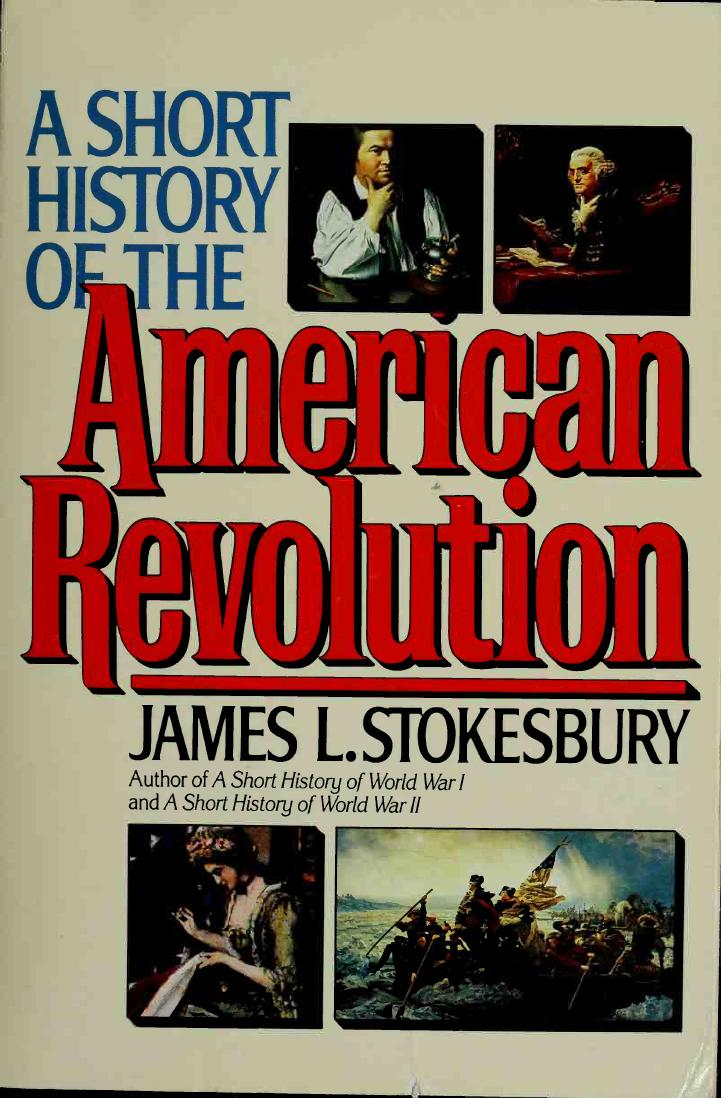A Short History of the American Revolution by James L. Stokesbury

Author:James L. Stokesbury [Stokesbury, James L.]
Language: eng
Format: epub, pdf
Tags: United States, History, General, Revolutionary Period (1775-1800)
ISBN: 9780688123048
Google: dPbc1TDRFOIC
Publisher: Harper Collins
Published: 1993-01-27T21:09:24+00:00
The Americans were more ambitious. In its first orders to Esek Hopkins, Congress directed him to take his squadron, all eight ships with less than a hundred little popguns, and clear first the Chesapeake, then the Carolina coasts, and then go up and drive the British away from Rhode Island. This was, to be fair, before the great British armada of 1776 had arrived, but it was still a heavy assignment. Hopkins immediately decided to pay no attention to it—commanders always had to have a discretionary clause in their orders in those days of slow communications—and as soon as he got his ships to sea, he sailed south for the Bahamas. There he handily captured the island of New Providence, now Nassau, with its fort and substantial military stores. This little action provided the first battle of the Continental Marines.
Unfortunately for Hopkins, on the way home five of his little ships fell in with a small British frigate, H.M.S. Glasgow, 20. For three hours the Britisher beat away at the Americans, several times raking Alfred, before he made his escape. The American performance was so poor that Hopkins and a couple of his captains were court-martialed, a procedure which made room for John Paul Jones to get his first command. The New Providence expedition was the first, and practically the last, fleet operation the Americans mounted during the entire war. Everything after that was done either by single ships, or by small squadrons that happened to come together for some ad hoc cooperation.
The effect of this was that the British Goliath was attacked less by an American David than by a swarm of Yankee bees. The American naval vessels were used as independent raiders, and whenever they could get to sea, they went looking for a fight. The privateers quartered the trade routes, snapping up prizes, and between the two of them, they caused the British a great deal of pain.
It worked both ways, of course. During the war the Americans commissioned more than 2,000 privateers, and they took more than 3,000 British vessels. The Admiralty was forced to provide convoy escort service around the British Isles themselves, and even for the packet services across the Irish Sea, something that had never been necessary before. But a good half of the American privateers were in turn taken by the British, and American merchant vessels were practically chased off the seas altogether. Thousands of American sailors languished and died in British prison hulks and in overcrowded jails in Halifax, the West Indies, and Britain.
The infant navy turned in some notable single-ship actions. In 1777 Captain Nicholas Biddle was given command of the new frigate Randolph, 32, and made a successful cruise in the West Indies, taking a Royal Navy ship and her convoy of three merchantmen. In early 1778 he broke out of blockade at Charleston, South Carolina, and got to sea again. On March 7 he sighted a sail and made for it. Unfortunately for him, it turned out to be a ship of the line, H.
Download
A Short History of the American Revolution by James L. Stokesbury.pdf
This site does not store any files on its server. We only index and link to content provided by other sites. Please contact the content providers to delete copyright contents if any and email us, we'll remove relevant links or contents immediately.
| Africa | Americas |
| Arctic & Antarctica | Asia |
| Australia & Oceania | Europe |
| Middle East | Russia |
| United States | World |
| Ancient Civilizations | Military |
| Historical Study & Educational Resources |
Cat's cradle by Kurt Vonnegut(15115)
Pimp by Iceberg Slim(14237)
4 3 2 1: A Novel by Paul Auster(12235)
Underground: A Human History of the Worlds Beneath Our Feet by Will Hunt(11986)
The Radium Girls by Kate Moore(11877)
Wiseguy by Nicholas Pileggi(5618)
Perfect Rhythm by Jae(5283)
American History Stories, Volume III (Yesterday's Classics) by Pratt Mara L(5218)
The Fire Next Time by James Baldwin(5207)
Paper Towns by Green John(5032)
Pale Blue Dot by Carl Sagan(4867)
A Higher Loyalty: Truth, Lies, and Leadership by James Comey(4803)
The Mayflower and the Pilgrims' New World by Nathaniel Philbrick(4385)
The Doomsday Machine by Daniel Ellsberg(4380)
Killers of the Flower Moon: The Osage Murders and the Birth of the FBI by David Grann(4355)
The Sympathizer by Viet Thanh Nguyen(4269)
Too Much and Not the Mood by Durga Chew-Bose(4237)
The Borden Murders by Sarah Miller(4197)
Sticky Fingers by Joe Hagan(4071)
